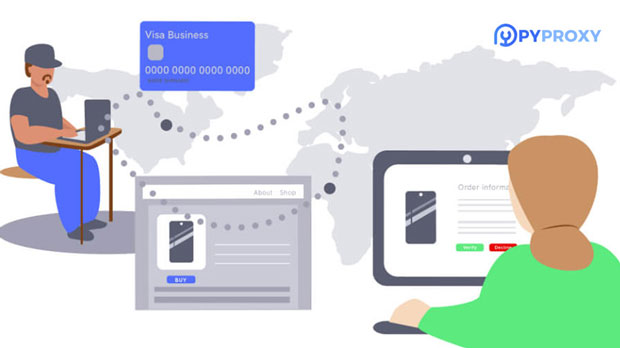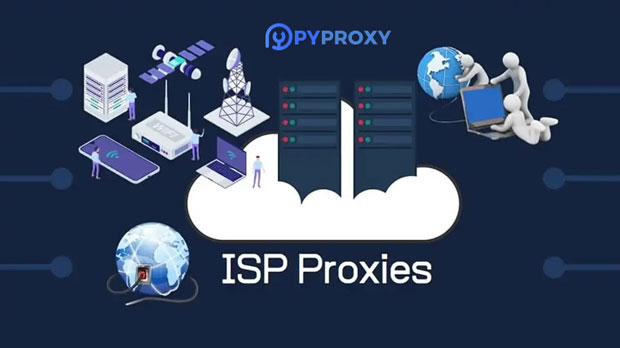When integrating proxy services into applications, understanding the different methods available is crucial. Both PYPROXY and Infatica offer API integration, but their approaches differ significantly in terms of flexibility, ease of use, and the features they provide. PyProxy focuses on offering a robust and straightforward solution for developers looking for scalability and automation, while Infatica provides a more dynamic and customizable API that caters to diverse needs in data collection, web scraping, and automation tasks. This article will break down the key differences between their API integration methods and explore their respective advantages to help businesses and developers choose the best option for their needs. Overview of PyProxy API IntegrationPyProxy provides a seamless API integration designed for developers who need to scale their proxy usage efficiently. The API is straightforward, offering essential proxy rotation features that can easily be incorporated into applications for web scraping, data collection, and automation. PyProxy’s integration method is based on simplicity and speed, with the goal of providing a hassle-free experience for users. The service focuses on easy access to proxies, automated proxy management, and minimal setup.PyProxy’s API offers basic features such as IP rotation, secure proxy networks, and the ability to select the proxy location. The configuration process for setting up an API key is quick and does not require extensive documentation for basic use. With these features, PyProxy is ideal for developers who need a reliable yet simple solution without a steep learning curve.Overview of Infatica API IntegrationOn the other hand, Infatica’s API integration is more advanced and customizable, catering to users who require a flexible, scalable solution. Infatica is designed for those who need proxies for more complex tasks such as large-scale web scraping, automated data harvesting, and geo-targeted services. The API is well-documented, offering a wide range of features such as session control, rotating IPs, and advanced proxy management, which allows users to fine-tune their proxy usage.Infatica’s approach to API integration is built around offering users a customizable experience, with a focus on precision, security, and the ability to handle high volumes of requests. The API offers support for various types of proxies, including residential, data center, and mobile proxies, making it a versatile choice for businesses requiring diverse proxy configurations. The integration process is well-documented and involves a few more steps than PyProxy, but it provides greater control and customization in return.Key Differences Between PyProxy and Infatica API IntegrationsUnderstanding the key differences between the two services can help users determine which API integration method is best suited to their needs. The following aspects distinguish PyProxy from Infatica in their integration approach:1. Ease of Use and SetupOne of the most noticeable differences between the two services is the ease of use. PyProxy is designed with simplicity in mind, offering a user-friendly setup process. The API key configuration is quick, and the integration process is straightforward, requiring minimal technical knowledge. This makes PyProxy a great choice for developers who need to get started quickly with minimal setup.In contrast, Infatica provides a more complex API integration that involves multiple setup steps, including selecting the right type of proxies, defining session parameters, and managing custom features like geo-targeting. While this approach offers greater flexibility, it may require more technical expertise and time to set up.2. Customization and FlexibilityInfatica offers a higher degree of customization compared to PyProxy. The Infatica API allows for more control over proxy management, such as fine-tuning proxy rotation rules, managing session persistence, and choosing between various proxy types (e.g., residential, mobile, or data center proxies). This flexibility is ideal for businesses that need to handle large volumes of traffic or complex scraping tasks, where different types of proxies and more granular control are required.PyProxy, on the other hand, is more focused on providing a straightforward, less configurable solution. While it offers some level of proxy management (e.g., rotating IP addresses and selecting proxy locations), it doesn’t provide the same level of granular control as Infatica. This makes PyProxy more suited for developers who need a simple, scalable solution without the need for advanced customization.3. Proxy Types and PerformanceBoth PyProxy and Infatica offer high-quality proxy services, but their approach to proxy types differs. PyProxy primarily focuses on providing residential and data center proxies, which are sufficient for general use cases like web scraping, automating browsing tasks, and bypassing geolocation restrictions. PyProxy's proxies are reliable and offer good performance, making them suitable for standard proxy needs.Infatica, however, provides a wider range of proxy types, including residential, mobile, and data center proxies. This diversity allows users to select the type of proxy that best suits their specific use case, whether it’s for large-scale scraping, geo-targeting, or avoiding CAPTCHA challenges. Infatica’s proxies are designed to handle high-volume tasks with a focus on speed, security, and reliability. Users can choose proxies based on their geographical location or needs, making Infatica a more versatile solution.4. Documentation and SupportBoth services provide good documentation, but Infatica goes the extra mile with a more comprehensive set of resources. Infatica offers detailed guides, examples, and troubleshooting information that can help developers implement the API more effectively. In addition, Infatica’s support is more robust, providing access to customer service through multiple channels, which is important for users who need real-time assistance during integration.While PyProxy offers basic documentation and some support resources, it may not be as comprehensive as Infatica's, which can be a limitation for users who require detailed instructions or who are working with complex proxy setups.5. Target AudienceThe target audience for PyProxy and Infatica differs based on the complexity of the use case. PyProxy is better suited for small to medium-scale operations where ease of use, quick setup, and scalability are more important than advanced customization. This makes it ideal for developers working on simpler tasks, such as web scraping or automating browsing sessions.Infatica, however, is designed for businesses and developers who need more control over their proxy setup, especially for large-scale operations. It is a better fit for those requiring custom proxy configurations, such as rotating residential proxies or handling high volumes of traffic. Infatica’s flexibility and scalability make it the preferred choice for businesses involved in extensive data collection and web scraping.In conclusion, both PyProxy and Infatica provide high-quality API integrations, but they cater to different needs. PyProxy is an excellent choice for developers who want a simple, reliable, and quick solution for proxy management with minimal setup. On the other hand, Infatica offers a more advanced and flexible API that provides greater control over proxy configurations, making it ideal for complex tasks requiring customization and high scalability. The decision between these two services ultimately depends on the specific needs of the user, with PyProxy being suitable for more straightforward applications and Infatica excelling in complex, large-scale operations.
Mar 28, 2025
![arrow]()




























































